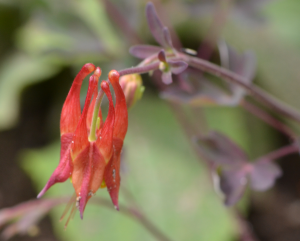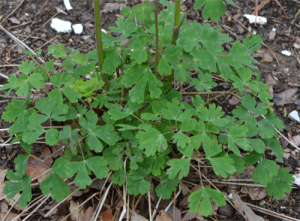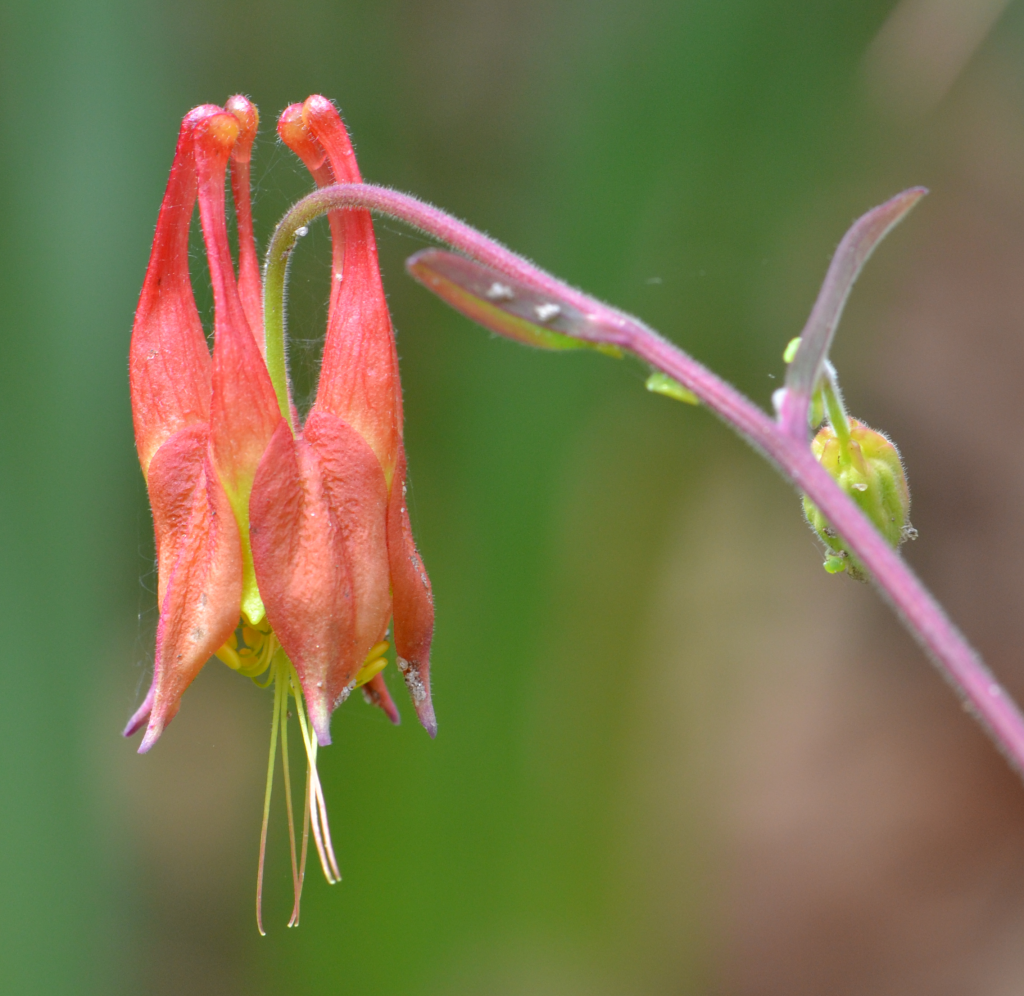
Aquilegia canadensis May 1 2011
This member of the Ranunculaceae family is an up to 2 feet tall perennial, with showy flowers. A nodding, red and yellow flower with upward spurred petals alternating with spreading, colored sepals and numerous yellow stamens hanging below the petals. The compound leaves, divided into round-lobed threes, provide texture and light play in the woodland garden. Even after the flowers are long gone, the plants keep producing leaves until late fall.

Be careful to plant commercial columbines near Aquilegia canadensis – it will readily hybridize with Aquilegia chrysantha, which has yellow flowers and is a plant native to the Southwestern United States. Unless of course, that is the effect you are looking for. Wild columbine will self-seed in your garden. Although the plant is a perennial and the roots and plant grow bigger over the years, I haven’t found a way to propagate the plant by dividing the root. As far as I know (and I may be wrong), seed, or a garden center carrying this native, are the only means to add more wild columbines to your landscape.
The name Aquilegia refers to an eagle, and if you look at the flower you will see structures that look like eagle talons. The plant also has some culinary use: The flowers can be eaten raw, and they are surprisingly sweet (because of the nectar content most likely). The flowers can be added to mixed salads where they will provide both taste and color. Native Americans used other parts of the plant (seeds, roots) in medicinal ways, but those parts contain toxic compounds and are therefore best avoided.

| Scientific name: | Aquilegia canadensis |
| Common name: | wild columbine |
| Other name: | wild red columbine, eastern red columbine |
| Bloom time: | May to June |
| Color: | red-orange |
| Light requirements: | sun to shade |
| Zone: | 3 to 8 |
| Soil: | alkaline to circumneutral |
| Water: | moist to dry |
| Origin: | eastern US |
Leave a Reply